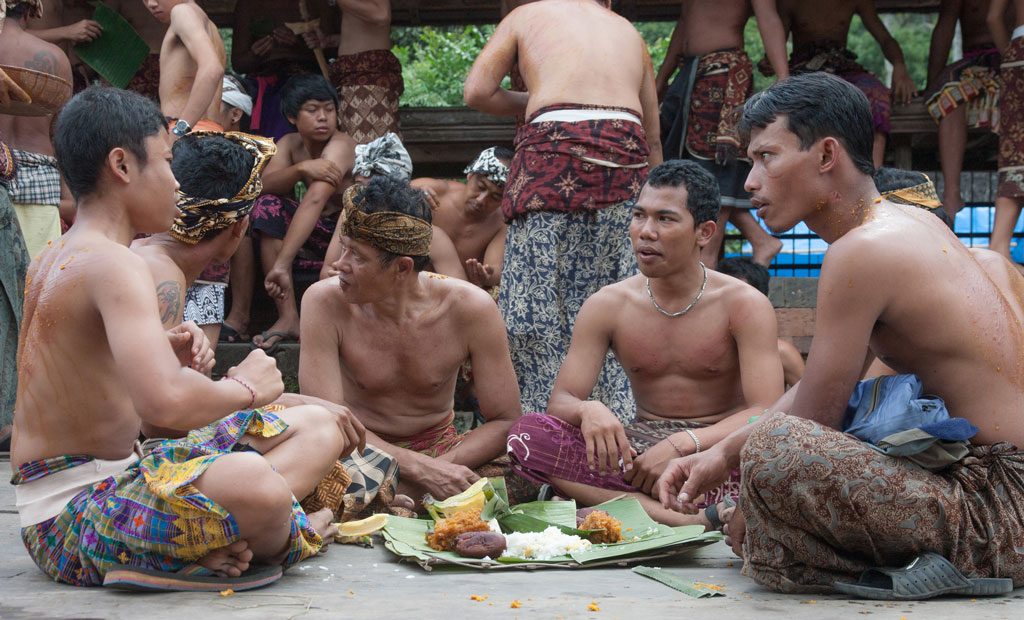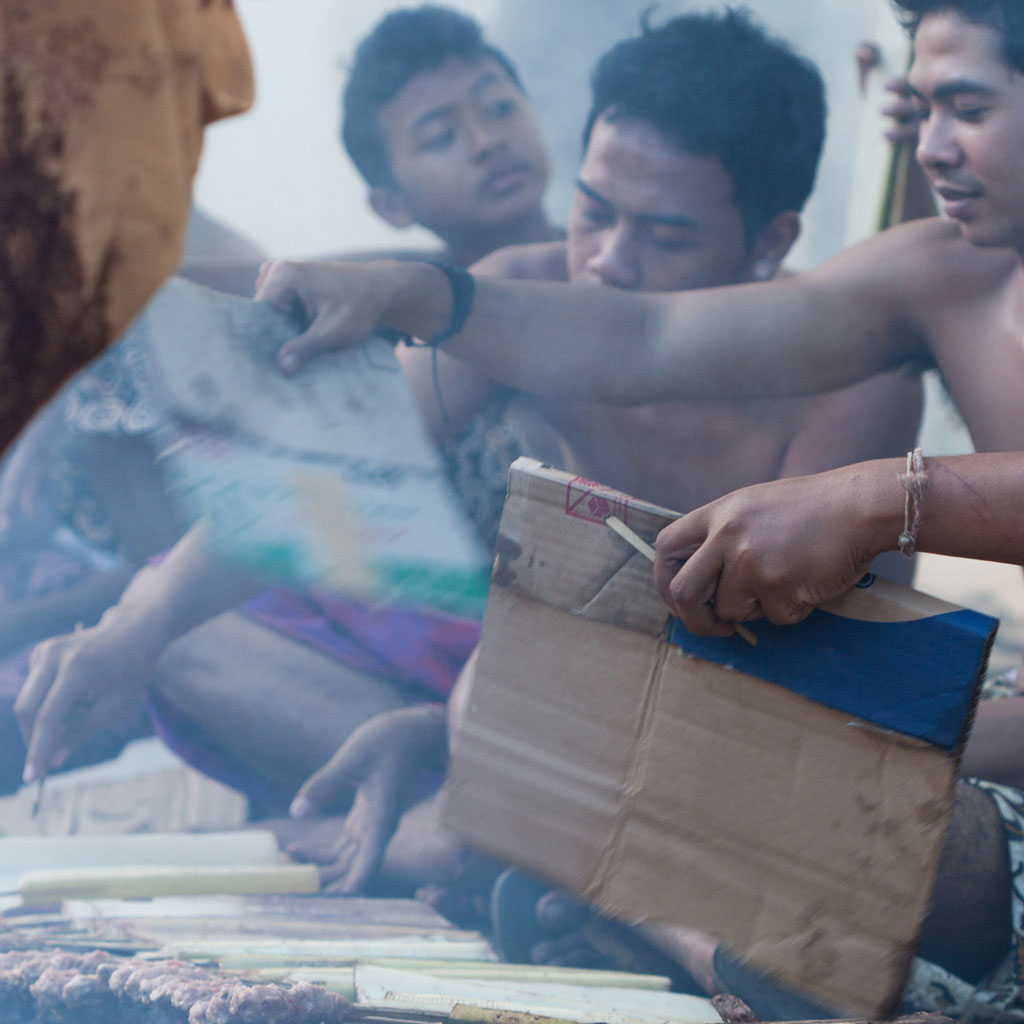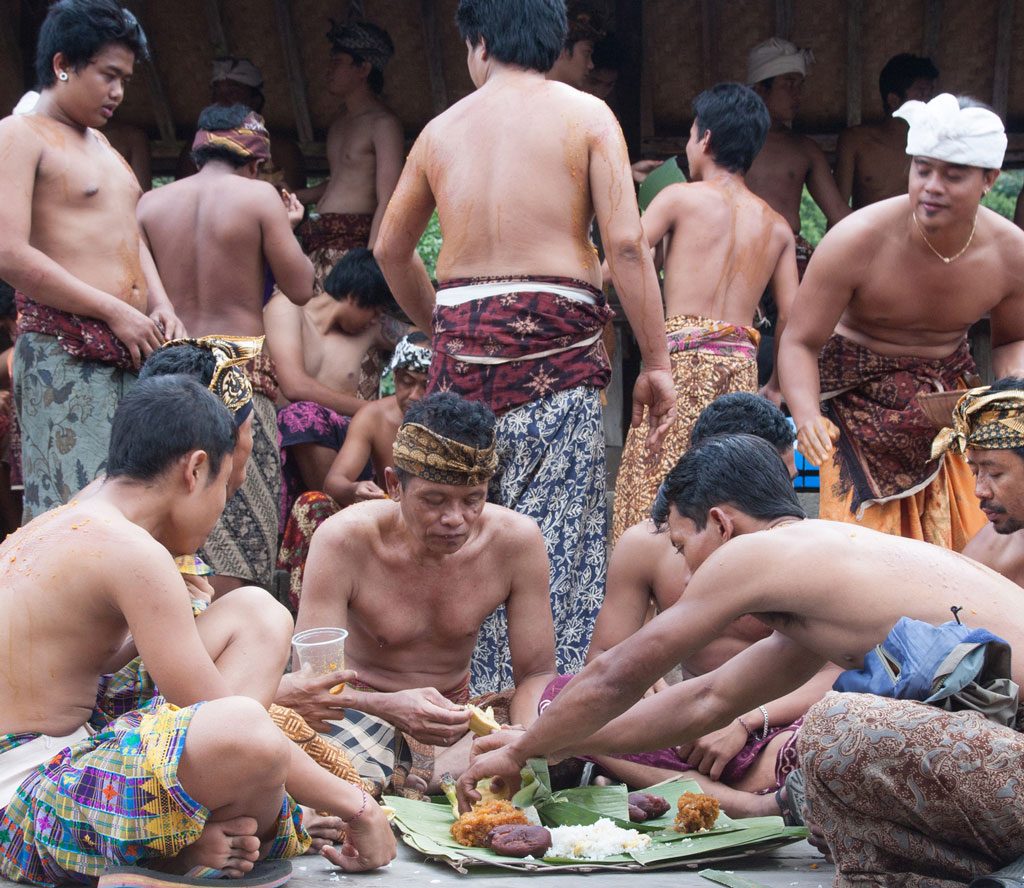In the life of the Balinese the spirit of togetherness i can be seen nearly everywhere. A wedding ceremony involves the entire Banjar Adat members, the administrator makes the arrangement and schedules so each member knows when he or she should come to the house of the family who holds the ceremony and helps with the preparation. Banjar Adat, of which membership is automatic following the bloodline and family tree, not only involves itself in happy occasions but also when there is a passing of a member.

Megibung is a dining occasion that demonstrates togetherness in Balinese life. It is an activity where some people sit together and share the food from one big plate or, more traditionally, off of a big piece of banana leaf. The tradition that originated in the Karangasem regency is actually not only about sharing the food, throughout the dinner people can engage in a light conversation and get to know each other better. The word Megibung derives from the Balinese word gibung, which means “share with each other”. Supposedly, King Anglurah Karangasem of Karangasem Kingdom was the pioneer of Megibung. It is said that during his expedition to expand his region, the majesty and his soldiers went into several wars. After winning the war, the king and his troops found a place to unwind and to eat. The King commanded that all of them would eat together from one huge leaf. During the feast, the King enjoyed togetherness with his troops so much, it tore down the social differences between them all.

Each group usually consists of five to seven people sitting cross-legged in a circle. Rice and side dishes are presented on a huge plate made from banana leaf or woven coconut leaf. Then the host welcomes the guests to start tasting the food, and allows everyone to feel free to eat by hand. Should an individual finish eating before the others, he should not leave before the rest have finished eating.

The activity is a legacy from the ancestors that is still preserved. The togetherness does not actually start right from the moment of dining, but before. The solidarity begins with gathering the ingredients, and slaughtering the pig as the basic ingredients for all the dishes. Then, with the help of women, together they prepare all the items, which includes satay, lawar – pork and young jackfruit salad, soup, and many more.
Want to experience the Megibung Feast for yourself? Try one of these restaurants who offer their own delicious take on this traditional meal.
Note:
Photos of people of Tenganan Village conducting Megibung after Mekare-kare procession.









